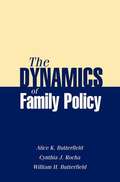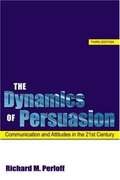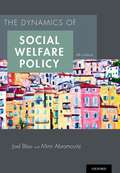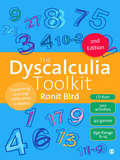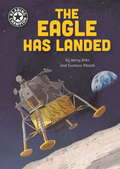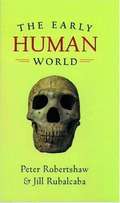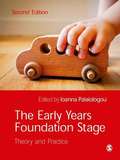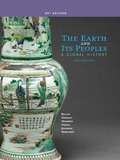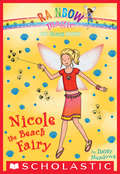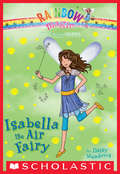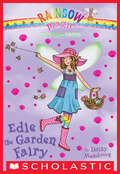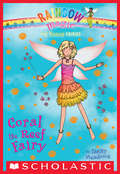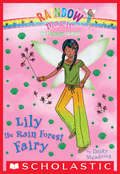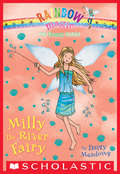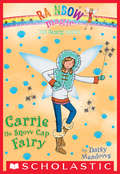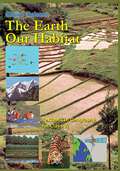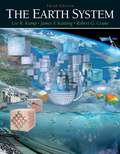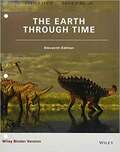- Table View
- List View
The Dynamics of Family Policy
by Alice K. Butterfield Cynthia J. Rocha William H. ButterfieldFamilies, in whatever form they may take, are at the center of all our lives. In the absence of a comprehensive national family policy, any policy that attempts to alter our lives peripherally can affect the stability, composition, and future of our families. In the United States, all policybecomes family policy. Such is the position of the authors of The Dynamics of Family Policy. This book challenges readers to redefine and broaden definitions of the family to reflect fundamental and recent demographic shifts in its structure. Devolution and managed care are among the nine major themes that weave their way through the chapters of the book. The book provides an approach topolicy analysis and advocacy that takes politics, power, and social problems into account. The authors provide an in-depth and detailed coverage of social policy in areas such as poverty, work and employment, food, housing, and welfare, health care, and family violence. Additional chapters addressfamily-focused policy initiatives such as marriage incentives, family caregiving across the lifespan, and the care and support of children. The book includes exercises and assignments for readers who want to become more actively involved in advocacy and policy practice. The Dynamics of Family Policy explores the roles professionals play in developing, implementing, and monitoring family policy. The book's combination of a comprehensive government policy account and a family-focused analytic perspective will enable students to maximize their understanding as theybegin their careers in the helping professions.
The Dynamics of Persuasion: Communication and Attitudes in the 21st Century
by Richard M. PerloffA textbook revised from the 1993 first edition not only to incorporate events and changes in the technology of communication, but also to focus more on the role theory and research play in persuasion in American society, and the ethical implications of ideas and research. Annotation (c)2003 Book News, Inc., Portland, OR (booknews.com)
The Dynamics of Social Welfare Policy (Fourth Edition)
by Joel Blau Mimi AbramovitzThe Dynamics of Social Welfare Policy uses the lens of an innovative policy model and an emphasis on social change to break new ground in social welfare policy texts. Starting from the explicit premise that every kind of social work practice embodies a social policy, the book stresses that policy knowledge enables social workers to help clients as well as to help themselves. Drawing on this awareness, the text then makes the standard social welfare policy material come alive by asking two new questions: 1) what factors trigger social change in these social policies?; and 2) how do these factors affect the social policies that influence what social workers actually do? To answer these questions, it develops a five-part policy model, which shows, through full chapters on each subject, how economics, politics, ideology, social movements, and the history of social welfare define social welfare policy.
The Dyscalculia Toolkit
by Ronit BirdWith over 200 activities and 40 games this book is designed to support learners aged 6 to 14 years, who have difficulty with maths and numbers. Ronit Bird provides a clear explanation of dyscalculia, and presents the resources in a straightforward fashion.<P><P> New to this second edition:<P> - even more activities, games and printable resources <P> - additional material, provided on the easily accessible CD-ROM<P> - a table indicating which difficulties are supported by which activities<P> - material that caters for a wider range of abilities and ages.<P> This book and accompanying CD meet the needs of specialist and non-specialist teachers who are working with learners with difficulties in maths in mainstream settings. It is equally useful as a resource to recommend to parents who want to support their children's learning.
The EMC Write-In Reader: Reading Strategies and Test Practice
by EMC Paradigm Publishing CompanyRedwood Level Reading Strategies
The EMC Write-in Reader: Reading Strategies and Test Practice, Birch Level
by EMC/Paradigm Publishing Editorial staffThe EMC Write-in Reader shows you how to use reading strategies before, during, and after reading and includes activities that develop your comprehension, fluency, and vocabulary skills. This portable anthology guides you in using reading strategies--reading tools that help you get more meaning from what you read. Questions and tips in the margins prompt you to record your thoughts and notes as you read.
The Eagle Has Landed: Independent Reading 18 (Reading Champion #459)
by Jenny JinksRelive the story of the first moon landing and the perilous mission of the astronauts aboard the Apollo 11.This first colour chapter book is a perfectly levelled, accessible text for Key stage 2 readers aged 10-11 or in year 6. Reading Champion offers independent reading books for children to practise and reinforce their developing reading skills.Fantastic, original stories are accompanied by engaging artwork and activities to provoke deeper response and encourage writing. Each book has been carefully graded so that it can be matched to a child's reading ability, encouraging reading for pleasure.The Key Stage 2 Reading Champion Books are suggested for use as follows:Independent Reading 11: start of Year 3 or age 7+Independent Reading 12: end of Year 3 or age 7+Independent Reading 13: start of Year 4 or age 8+Independent Reading 14: end of Year 4 or age 8+Independent Reading 15: start of Year 5 or age 9+Independent Reading 16: end of Year 5 or age 9+Independent Reading 17: start of Year 6 or age 10+Independent Reading 18: end of Year 6 or age 10+
The Early Human World (The World in Ancient Times #1)
by Jill Rubalcaba Peter RobertshawA six-million-year-old jaw bone in Ethiopia proves to be a piece of the earliest hominid discovered-so far. Big Mama, who used a tree branch to escape from a zoo in Holland, is found sipping chocolate milk at a local restaurant. Nandy, a 50,000-year-old skeleton surrounded by flower pollen in Iraq, casts doubt on the beastly reputation of an early hominid. Found frozen in the Alps, Otzi reveals what people in Europe ate 5,000 years ago. Ardipithecus ramidus kadabba, a chimpanzee, a Neandertal, and the Iceman are just some of the characters who make up The Early Human World. Peter Robertshaw and Jill Rubalcaba tell the story of early human life using an incredible variety of primary sources: 3.5-million-year-old footprints preserved by a volcano provide evidence of our ancestors' walking on two legs. Stone flakes fashioned 2 million years ago prove early hominids used tools. Bears, lions, and rhinoceroses painted in a cave 30,000 years ago reveal our ancestors' artistic side. An 8,500-year-old dog grave shows the extraordinarily long history of man's best friend. This evidence helps archaeologists decipher not just how we came to be the Homo sapiens we are today, but also what life may have been like for our earliest ancestors. The first Australians encountered freakishly gigantic beasts: kangaroos as big as houses and tortoises the size of cars. The Sahara Desert was once a fertile land, supporting herds of cattle, sheep, and goats. The Early Human World takes readers to sites around the world as archaeologists piece together the clues to our past. For grades 6-8.
The Early Years Foundation Stage
by Ioanna PalaiologouThe Early Years Foundation Stage has been praised by academics and students for its theoretical underpinning and practical case studies. In the light of the revised EYFS, the new edition combines a comprehensive range of topics, up to date coverage of the EYFS curriculum, additional case studies, an increased focus on critical reflection, and access to free journal articles relating to key topics. It is an ideal resource for students undertaking any Early Years or Early Childhood Studies courses, or those working toward the Early Years Teacher qualification. <P> <P> This second edition introduces new chapters on: <P> * Historical developments in early years educational policy <P> * Implementation of EYFS <P> * Play-based learning <P> * Observational recordings and analysis in the EYFS <P> * Working in partnership with parents <P> * Safeguarding children <P> * Children's health <P> * Inclusion in the early years <P> * Leadership <P> * Literacy. <P> Outstanding Learning Features: <P> * Up to date coverage of revised EYFS <P> * New two-colour layout makes the book user-friendly and easy to navigate <P> * Chapter aims identify what each chapter will cover at a glance <P> * Case studies in each chapter help you to link theory to practice <P> * Further reading directs you to external resources to deepen your understanding <P> * Reflection tesks help you reflect on how the chapter can be applied to your personal and professional development. <P> Visit www.sagepub.co.uk/Palaiologou2e for free access to a selection of SAGE Journal Articles related to key topics in the book.
The Earth And Its Peoples: A Global History (AP Edition)
by David Northrup Lyman Johnson Steven Hirsch Richard Bulliet Pamela Crossley Daniel HeadrickFeaturing a beautiful new design, THE EARTH AND ITS PEOPLES, Sixth Edition, presents world history in a balanced, global framework, shifting the focus away from political centers of power. This truly global world history book employs a fundamental theme-the interaction of human beings and the environment-to compare different times, places, and societies. Special emphasis is given to technology (in its broadest sense) and how technological development underlies all human activity.
The Earth Dragon Awakes: The San Francisco Earthquake Of 1906
by Laurence YepNIMAC-sourced textbook <p>Part of the ReadyGen Student Classroom Library</p>
The Earth Fairies #1: Nicole the Beach Fairy (The Earth Fairies #1)
by Daisy MeadowsThe fairies are going green!<P> The fairy king and queen have just put together a new team of seven fairies for a very special mission. They are the Earth Fairies! Together, they're going to work their magic to clean up the environment. But they can't do it alone. Luckily, Rachel and Kirsty are ready to help!<P> The beach on Rainspell Island is covered with garbage, and it's putting the sea creatures in danger. But Nicole the Beach Fairy can't do much without her missing magic wand. Can the girls help her track it down?<P> Find the missing magic wand in each book and help save the environment!
The Earth Fairies #2: Isabella the Air Fairy (The Earth Fairies #2)
by Daisy MeadowsThe fairies are going green!<P> The fairy king and queen have just put together a new team of seven fairies for a very special mission. They are the Earth Fairies! Together, they're going to work their magic to clean up the environment. But they can't do it alone. Luckily, Rachel and Kirsty are ready to help!<P> The air on Rainspell Island is thick with smog. Isabella the Air Fairy wants to return the island's fresh ocean breezes and sparkling blue skies. But she can't do anything without her wand!<P> Find the missing magic wand in each book and help save the environment!
The Earth Fairies #3: Edie the Garden Fairy (The Earth Fairies #3)
by Daisy MeadowsThe fairies are going green!<P> The fairy king and queen have just put together a new team of seven fairies for a very special mission. They are the Earth Fairies! Together, they're going to work their magic to clean up the environment. But they can't do it alone. Luckily, Rachel and Kirsty are ready to help!<P> Rachel and Kirsty are volunteering for a gardening project. They're going to turn an unused lot into a beautiful garden. But first they need to find Edie's missing wand-before it's too late!<P> Find the missing magic wand in each book and help save the environment!
The Earth Fairies #4: Coral the Reef Fairy (The Earth Fairies #4)
by Daisy MeadowsThe fairies are going green!<P> The fairy king and queen have just put together a new team of seven fairies for a very special mission. They are the Earth Fairies! Together, they're going to work their magic to clean up the environment. But they can't do it alone. Luckily, Rachel and Kirsty are ready to help!<P> Coral the Reef Fairy's magic keeps the reef environment healthy. But Jack Frost's goblins have her wand and underwater environments everywhere are in trouble. Can Rachel and Kirsty find the wand and put an end to Jack Frost's plans? <P> Find the missing magic wand in each book and help save the environment!
The Earth Fairies #5: Lily the Rain Forest Fairy (The Earth Fairies #5)
by Daisy MeadowsThe fairies are going green!<P> The fairy king and queen have just put together a new team of seven fairies for a very special mission. They are the Earth Fairies! Together, they're going to work their magic to clean up the environment. But they can't do it alone. Luckily, Rachel and Kirsty are ready to help!<P> Lily the Rainforest Fairy whisks the girls away to a tropical forest to find her wand. Lily needs her wand to save the rainforest-and to get Rachel and Kirsty home safe again.<P> Find the missing magic wand in each book and help save the environment!
The Earth Fairies #6: Milly the River Fairy (The Earth Fairies #6)
by Daisy MeadowsThe fairies are going green!<P> The fairy king and queen have just put together a new team of seven fairies for a very special mission. They are the Earth Fairies! Together, they're going to work their magic to clean up the environment. But they can't do it alone. Luckily, Rachel and Kirsty are ready to help!<P> Rachel and Kirsty are helping Milly the River Fairy clean up a polluted river. But troublemaking goblins keep getting in the way. The girls need to get Milly's wand back to make the river a safe place again.<P> Find the missing magic wand in each book and help save the environment!
The Earth Fairies #7: Carrie the Snow Cap Fairy (The Earth Fairies #7)
by Daisy MeadowsThe fairies are going green!<P> The fairy king and queen have just put together a new team of seven fairies for a very special mission. They are the Earth Fairies! Together, they're going to work their magic to clean up the environment. But they can't do it alone. Luckily, Rachel and Kirsty are ready to help!<P> Rainspell Island's weather is wacky-and it's all because Carrie the Snow Cap Fairy's magic wand is missing. Her magic helps keep the earth's climate under control. Rachel and Kirsty are determined to outsmart Jack Frost and keep the earth clean and green! <P> Find the missing magic wand in each book and help save the environment!
The Earth Our Habitat - geography textbook for class 6 - competitive exam - Ncert
by NcertThe Earth Our Habitat - Textbook Social Science for Class - 6 - 656
The Earth System
by Lee Kump Robert Crane James KastingThe first book of its kind to address the issues of global change from a true Earth systems perspective, The Earth System offers a solid emphasis on lessons from Earth's history that may guide decision-making in the future. The authors' systems theory approach looks holistically at all that happens on Earth and the interactions of all that is here--such as the effect of weather on land, the effect of erosion on the ocean, the chemical changes that occur--and emphasizes that these processes do not happen in a vacuum. An emphasis on global change addresses such modern issues as global warming, ozone depletion, and biodiversity loss.A variety of boxed inserts address topical issues related to the material presented, giving readers appealing visual and highlighted aids. KEY TOPICS: Global Change; Daisyworld: An Introduction to Systems; Global Energy Balance: The Greenhouse Effect; The Atmospheric Circulation System; The Circulation of the Oceans; The Cryosphere; Circulation of the Solid Earth: Plate Tectonics; Recycling of the Elements; Focus on the Biota: Metabolism, Ecosystems and Biodiversity; Origin of the Earth and of Life; Effect of Life on the Atmosphere: The Rise of Oxygen and Ozone; Long-Term Climate Regulation; Biodiversity Through Earth History; Pleistocene Glaciations; Global Warming, Part 1: The Scientific Evidence; Global Warming, Part 2: Impacts, Adaptation, and Mitigation; Ozone Depletion; Human Threats to Biodiversity; Climate Stability on Earth and Earth-Like Planets. MARKET: A useful reference for anyone who wants to learn more about Earth processes to become a more well-informed consumer.
The Earth System: Investigating Water Shortages, Investigation Notebook
by The Lawrence Hall of ScienceNIMAC-sourced textbook
The Earth Through Time
by Harold L. Levin David T. King Jr.The Earth Through Time, 11th Edition, by Harold L. Levin and David T. King chronicles the Earth's story from the time the Sun began to radiate its light, to the beginning of civilization. <p><p> The goal of The Earth Through Time is to present the history of the Earth, and the science behind that hsitory, as simply and clearly as possible. The authors strived to make the narrative more engaging, to convey the unique perspective and value of historical geology, and to improve the presentation so as to stimulate interest and enhance the reader's ability to retain essential concepts, long after the final exam.

